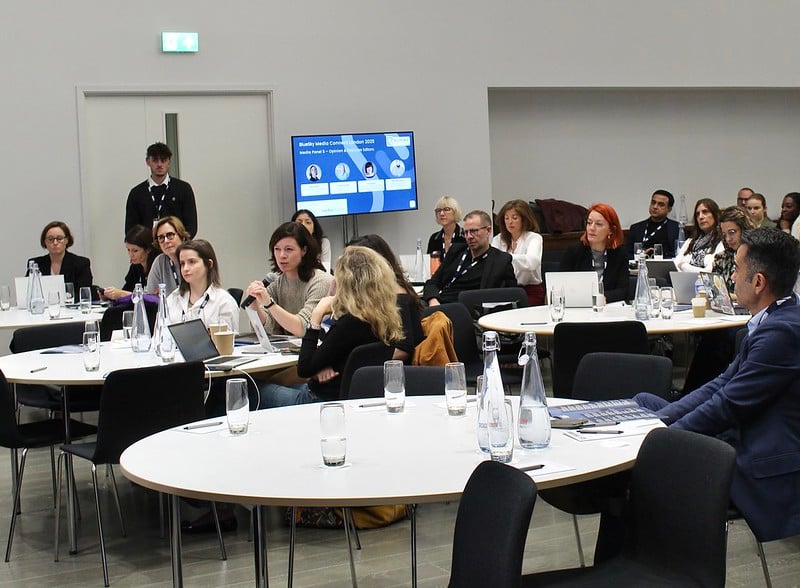Authentic Messaging Builds Trust - Here's How Business Schools Can Do It

Author:
Kerry Ruffle
When aspiring students decide it’s time to apply to business school, many choose to seek out the advice and guidance of admissions consultants to help navigate their search and gain a foot in the door of their dream institution.
The most common advice these consultants pass on to their clients? Be authentic.
It might sound like stating the obvious, but the art of remaining true to one’s self is often easier said than done – especially when trying to make a good first impression. As a result, authenticity also forms a common piece of feedback to applicants from admissions teams themselves.
If applicants aren’t able to display their motivations for pursuing an institution or programme, share their visions and values realistically, back up their bold statements with actions and examples or acknowledge their shortcomings and reflect upon them, their submissions will often find their way to the reject pile.
And yet, despite demanding applicants being up front about both their aspirations and capabilities, it’s a lesson that many institutions themselves need to learn. Like their potential students, it’s all too common for schools to forget themselves somewhat when trying to impress their audiences.
It’s easy to understand why. The higher ed landscape is competitive. Business schools must find a means of distinguishing themselves from others in order to attract the very best candidates. It’s a difficult task. Where the inflexible realities of rankings and other such data cannot help a school to stand out, their identity and values must come to the fore.
And, just like when applicants put together their personal statements, when schools endeavour to shout loudly about what makes them different – or superior – to others, it can be easy to (unintentionally) stretch realities.
Of course, it’s no bad thing to shout loudly about what makes your institution special – and saying nothing at all almost certainly ensures a school will be overlooked. But shouting too loudly, or claiming too broadly, about your excellence risks being seen as disingenuous if there is little else shared behind it.
And applicants, like admissions consultants, will quickly lose faith.
However, when institutions share messaging that feels genuine rather than manufactured, it creates identity, lasting trust and, as a result, a stronger reputation in the eyes of their audience.
How can this be done? Easy – be authentic of course!
No – in all seriousness, it takes a little planning. Here is our advice to get you started.
1. Understand Your Strengths And Reinforce Them
Take the time to identify a few core areas of your institution which resonate best with your mission statement (and if there’s no good fit, perhaps it’s time to reconsider your branding?), and make an active effort to nurture them.
For example, events on campus that resonate with your stated commitment to sustainability perhaps? Creating opportunities to welcome a greater diversity of students onto campus in line with your DEI stance? Hosting expert sessions for students and industry on the future of fintech, inspired by your stated world-leading finance programmes and faculty? Each action you take provides a story to share (if not with media then with your immediate community) and reinforces your commitment to your core causes. Over time, these build into a solid track record in that area and enhances your identity.
Another route is by shining a spotlight on your faculty. Business schools possess tremendous intellectual capital that often remains untapped in external communications. Faculty research and thought leadership represents a further way to share authentic, valuable contributions with your audiences that will differentiate your institution from its neighbours.
Identifying which faculty are working in the areas that best reflect your identity, and elevating their research in a non-academic and accessible way is a highly effective means of showcasing your worth and highlighting your capabilities.
It does not always have to be research papers that make their way to the media. Encouraging and supporting faculty in sharing their well-informed perspectives on the things happening in the world around them is another powerful way of not only showcasing your institution’s expertise to a wider audience but also in humanising your institution as a whole – demonstrating the capacity for action beyond your values.
2) Engage with People – Not Just with Promotion
Business schools are not only valued for their academic offerings. Applicants invest in institutions for a variety of reasons. It might be a desire to live in a specific country or experience a particular culture, it might be to broaden their networks in a desired field, or it even might be because there is a level of support and access at your institution that they cannot find elsewhere. Overall, students are seeking a life experience.
Taking the time to figure out what your applicants what from your institution, and considering how you can better engage with these priorities shows applicants that you are, and will be, invested in their experience should they choose to study with you.
Sharing student and alumni success stories, their on-campus activities, even their own experiences of studying abroad and adjusting to a new way of life can all help show prospective students what they can expect to gain from joining your community – proving that what is stated in your brochures and web copy can be realised in person.
Business schools are sometimes very good at initially pushing information out – sharing rankings and awards, campus news etc. on social media or on their websites, but further engagement is often limited. For social media in particular, institutions can face a tough time making an impact as people tend to engage more with other people than with businesses and organisations.
Here, enlisting the support of current students and alumni can be an effective way of broadening your circles, boosting the capacity for engagement and displaying support for your community all in one go.
In a recent BlueSky Education blog, Megan Rose-Vince, shares “it is not enough to just post content on social media and call it a day… make sure you are on top of responding to DMs, comments, and mentions on your social media platforms. By growing your social media presence, you will be able to create an amazing online community for your institution and in return, it will also have the potential to attract prospective students to enrol in your institution.”
At the centre of all of this is allowing your spokespeople to be themselves – not simply mouthpieces for promotion.
3) Be Human
Following on from this, endeavouring to be human in your own media outreach can work wonders in helping win over journalists too.
If you work for an institution’s communications team you likely already know that gaining regular media attention (and for the right reasons!) can be difficult. Often the news that a university or business school wants to proactively share is of little interest to writers whose focus lies beyond higher education – and such writers seem to be in smaller and smaller supply.
As such it makes sense to widen the net and engage with (or hire an agency who can engage with) writers in other areas – whether that be informational or geographical.
And in reaching out to those individuals, sharing a considered, tailored and personal approach can be a far more effective approach than a mass mail, or a copy-and-paste blanket statement.
In a recent BlueSky blog, Alex Lopez comments, “when something seems universally relevant, it can often feel personally irrelevant. What resonates most with readers, and with journalists, is emotion, experience, and relatability.”
Creating narratives that don’t just state facts and figures but also create compelling narratives will not only enable an institution to capture attention but also foster genuine connections. It helps to establish a voice – an identity – which will help an institution to sit apart for its peers in a way that cannot be replicated.
It’s an approach that may even hold merit when attempting to make new partnerships or bring in investors.
4) Share Your Successes – And Your Lessons
It’s all well and good to tell the world what you’re doing well at, but what about those instances when things aren’t quite going to plan?
It’s not unusual for an institution to face adversity – and often its due to events outside of control. When such times occur the instinct can be to bury your head in the sand and wait for it to all blow over. Whilst adopting a stance of quiet dignity, or a refusal to “lower” an institution to engage with claims you feel are unfair or unsubstantiated might be easier in the moment, sometimes action must be taken to reassure your community.
In building authenticity, have a voice on the issues that matter.
And attempting to bury bad news is almost always a bad idea. Audiences – especially younger generations - are more engaged than ever, demand more transparency from the brands they engage with and expect swift responses to their grievances. Fail to get this, and they often won’t be shy in sharing their disappointment.
The risk for institutions lies in being unprepared for a crisis to occur. Taking steps to create, enforce and frequently revisit a crisis comms strategy to employ when things take a sour turn is an effective way to help an institution regain control of an unflattering narrative – and maybe even turn it into something positive.
BlueSky’s Jonny Stone recently shared an essential guide for getting crisis comms right – setting the process out into a few simple steps;
- Availability/responsiveness
- Consistent messaging
- Positivity
- Other important factors
5) Reinforce And Repeat
It perhaps goes without saying, but none of the above actions should be taken in isolation, or should be enacted as a one-off. The most essential part of building an identity – and an authentic one at that – lies in consistency. Institutions that share stories or make statements in disjointed bursts will do little to win the attention or the trust the audiences they’re seeking to impress.
Building a positive, authentic image takes an ongoing commitment. The good news is that institutions are rarely short of good stories or talented people keen to share what makes them special. The difficulty often lies in dedicating the time to continuously cultivate this into building a bigger picture. This is where external supporters like BlueSky can help an institution to shine. If our blogs haven’t convinced you of that already, perhaps it’s worth getting in touch to find out what more we could do for your institution specifically.
And where others institutions live and die by rankings tables each year, your institution can remain evergreen.

Kerry is the Strategic Communications and Editorial Lead at BlueSky Education and a former BBC journalist. Recognised in the graduate management education arena as a leading authority on communications for the industry, Kerry has more than a decade of experience in the media and public relations.
Share your thoughts

Free Guide
We've got you covered with tips and expert advice on best practices across each platform, examples of what's working for your competitors and ideas on how to update your social media strategy.
Get It Now










